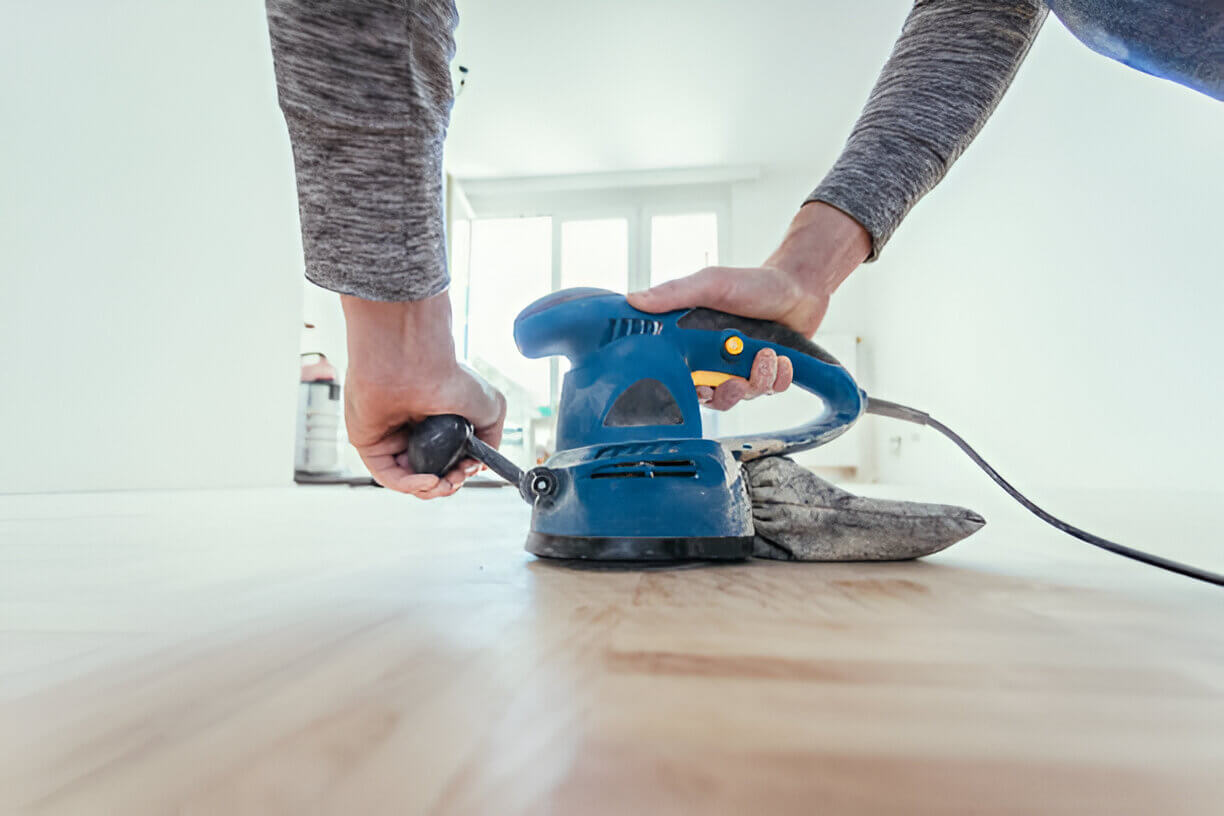Parquet flooring, with its intricate patterns, adds a touch of elegance to any home. However, over time, parquet floors can become scratched, dull, or uneven, requiring refinishing to restore their beauty.
While sanding is a crucial step in the refinishing process, it can be a daunting task, especially if you are doing so with a drum sander or belt sander. Therefore, in this blog, we will discuss how to hand sand a parquet floor in a step-by-step approach.
We’ll cover everything from selecting the right tools and sandpaper to preparing the floor and executing the sanding process with precision. So, let’s get started.
Contents
Why Hand Sand A Parquet Floor?
Using a large drum sander or belt sander can be risky with parquet flooring, as it might leave uneven areas or disrupt the pattern. Hand sanding is slower, but it allows for more control over pressure, direction, and smoothness, which helps the wood’s look.
Sand Your Parquet Floor In 6 Simple Steps
1. Gather Your Tools
First of all, gather all tools required to hand sand a parquet floor. The list includes the items listed below:
- Sandpaper in different grits (80, 120, 150, and 220)
- Hand sanding block or orbital sander
- Vacuum cleaner or broom
- Microfiber cloth
- Wood filler (for cracks and gaps)
- Dust mask and protective goggles
- A stain and a finish
- Roller brush
2. Prepare The Room
The second step is to prepare the room to ensure proper sanding without any hindrances. Hence, remove all furniture from the area and cover vents, doorways, and light fixtures with plastic to minimise dust spread. Also, vacuum or sweep the floor to remove debris, dirt, or loose particles that could scratch the surface.
3. Inspect The Floor For Damage
The third step is to inspect the floor. Use a wood filler to repair any gaps on your hardwood floor if you come across any. Allow it to dry completely before sanding the area. Also, inspect for dent marks and get them fixed as well.
4. Start Sanding The Floor
Now, the fourth step is to sand your parquet floor. But before beginning, there are a few things you should know. If your parquet floor has an old finish or there are visible scratches, you can start with coarse-grit sandpaper (80 grit). For well-maintained floors, beginning with 120–grit sandpaper would do just fine.
So, use a hand sanding block or attach sandpaper to an orbital sander for better grip and start sanding the floor. Sand in the same direction as the wood grain in each section of the parquet to avoid cross-grain scratches. For intricate patterns or edges, sand gently by hand without applying too much pressure. Move slowly and steadily to prevent uneven patches.
After the first round with 80-grit or 120-grit sandpaper, move to 150-grit to smooth the surface further. Finish the final sanding with 220 grit for an ultra-smooth surface.
5. Clean The Floor Thoroughly
As you’ve sanded the floor, grab your vacuum cleaner and start vacuuming the floor to remove dust particles. Pay special attention to the corners and seams where dust tends to accumulate. This step is crucial as the floor needs to be clear for the stain or finish to adhere properly.
You Can Also Read: How To Choose The Right Carpet Cleaning Service: Questions To Ask Before Hiring
6. Apply A Stain And Finish
The final step is to apply a stain and a finish. Choose a stain that complements your home’s decor and the natural colour of the wood and apply it using a clean cloth or roller brush, following the manufacturer’s instructions. Allow the stain to dry completely before applying the finish.
Once the stain dries, choose a suitable hardwood floor finish and apply it using your roller brush. Apply multiple coats for added protection and durability. The finish helps protect the wood from wear and tear and enhances its natural beauty, so make sure you don’t skip this step.
Conclusion!
Similar to other types of hardwood, parquet floors can also wear out with time. And, what’s more challenging is that unlike traditional floorboards, a parquet requires extra care to preserve its unique design, especially when hand sanding it.
Nonetheless, with the right tools and technique, you can easily and effectively hand sand a parquet floor without compromising its intricate design and achieve smooth results.

